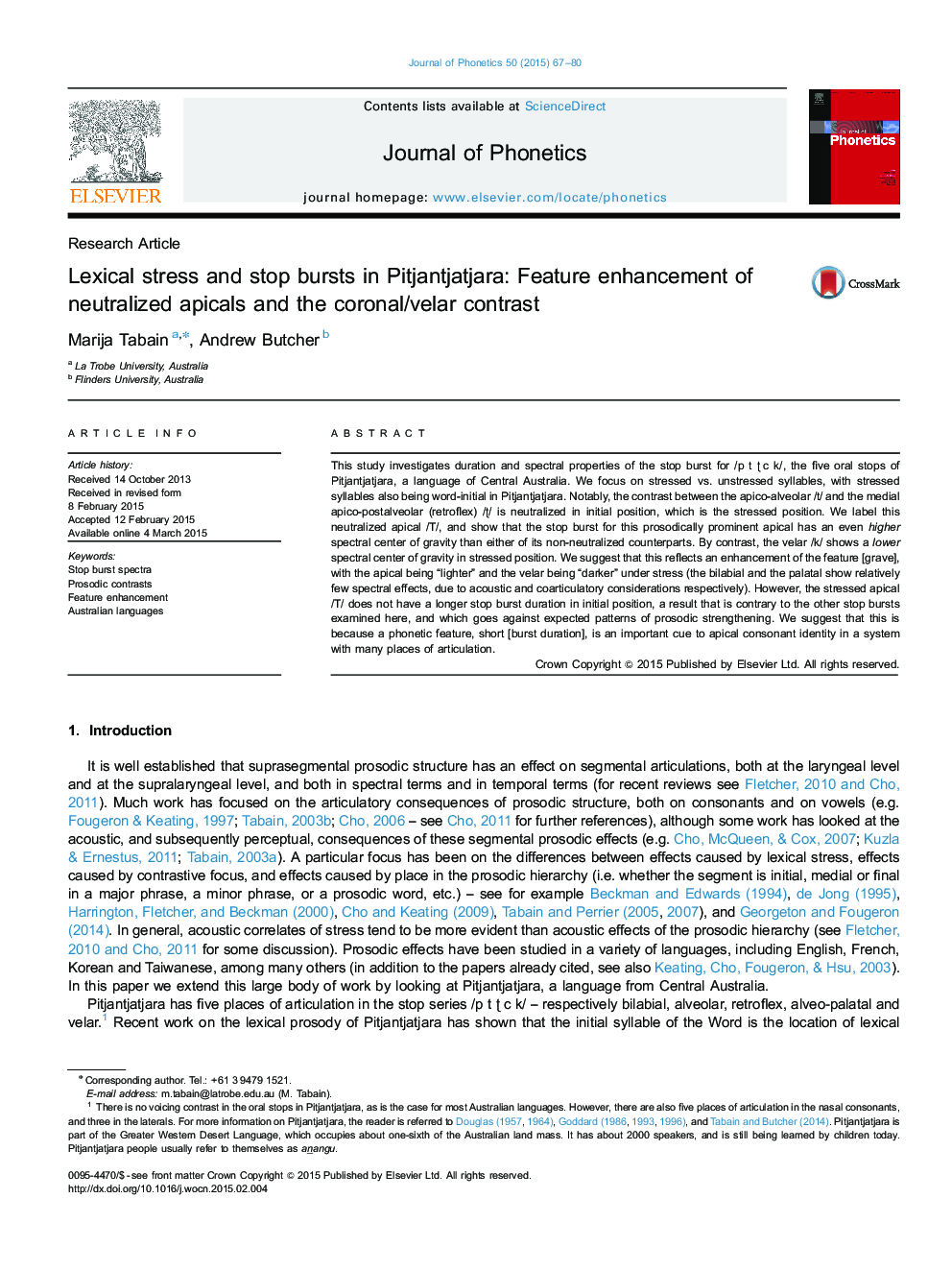| Article ID | Journal | Published Year | Pages | File Type |
|---|---|---|---|---|
| 1100683 | Journal of Phonetics | 2015 | 14 Pages |
•Stressed but neutralized apical /T/ has a higher center of gravity than unstressed /t/ and /ʈ/.•Stressed velar /k/ has a lower center of gravity than unstressed /k/.•Bilabial /p/ and alveo-palatal /c/ show few spectral effects of stress.•Duration of burst is greater under stress for all stops except neutralized apical /T/.•We interpret these results as enhancement of the features [grave] and [burst duration].
This study investigates duration and spectral properties of the stop burst for /p t ʈ c k/, the five oral stops of Pitjantjatjara, a language of Central Australia. We focus on stressed vs. unstressed syllables, with stressed syllables also being word-initial in Pitjantjatjara. Notably, the contrast between the apico-alveolar /t/ and the medial apico-postalveolar (retroflex) /ʈ/ is neutralized in initial position, which is the stressed position. We label this neutralized apical /T/, and show that the stop burst for this prosodically prominent apical has an even higher spectral center of gravity than either of its non-neutralized counterparts. By contrast, the velar /k/ shows a lower spectral center of gravity in stressed position. We suggest that this reflects an enhancement of the feature [grave], with the apical being “lighter” and the velar being “darker” under stress (the bilabial and the palatal show relatively few spectral effects, due to acoustic and coarticulatory considerations respectively). However, the stressed apical /T/ does not have a longer stop burst duration in initial position, a result that is contrary to the other stop bursts examined here, and which goes against expected patterns of prosodic strengthening. We suggest that this is because a phonetic feature, short [burst duration], is an important cue to apical consonant identity in a system with many places of articulation.
